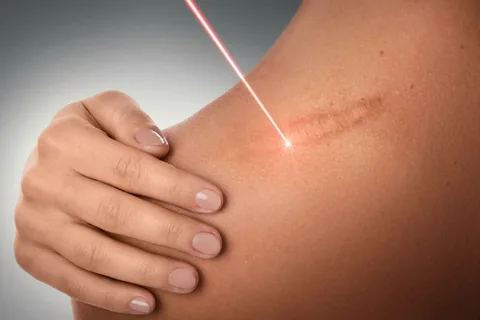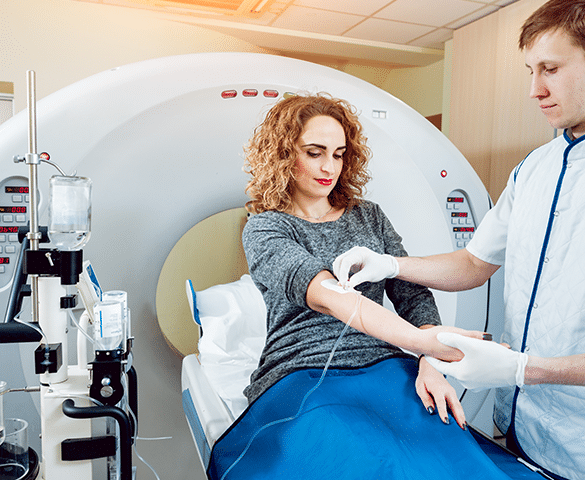Keloid scars are a common cosmetic concern, often resulting in thick, raised tissue that extends beyond the boundaries of the original wound. While keloids are not typically harmful to your health, they can cause discomfort or emotional distress due to their appearance. If you’re looking to reduce the appearance of keloids, laser keloid removal treatment is one of the most effective methods available. It offers the potential for smoother, flatter skin, and can be a transformative solution for those seeking scar removal treatment. However, the healing process after laser treatment is just as important as the procedure itself, and proper aftercare is essential for the best results.
In this blog, we will provide essential aftercare tips for laser keloid treatment to help you achieve optimal healing and minimize the risk of recurrence.
Understanding Laser Keloid Treatment
Laser scar treatment involves using targeted light beams to break down the excess collagen responsible for keloid scars. The laser stimulates the skin to heal naturally, reducing the thickness, redness, and size of the keloid. This scar removal treatment is often recommended when other methods have proven ineffective. While laser treatment can significantly improve the appearance of keloid scars, proper aftercare is essential for optimal healing and to avoid complications.
Keep the Area Clean and Moisturized
Maintaining cleanliness and moisture in the treated area is one of the most essential aftercare steps. Cleanse the scar site with a mild, non-abrasive cleanser and lukewarm water. Avoid harsh soaps or exfoliants, as they can irritate sensitive skin and hinder healing. After cleansing, apply a thin layer of the recommended moisturizer or healing ointment. Dermatologists often suggest products containing silicone gel, vitamin E, or aloe vera, as they promote skin healing and soothing. Proper moisturization prevents excessive dryness and scabbing, ensuring a smoother healing process.
Protect the Skin from Sun Exposure
After laser keloid treatment, the skin is particularly sensitive to the harmful effects of ultraviolet (UV) rays. Sun exposure can lead to hyperpigmentation or discoloration in the treated area, worsening the appearance of the scar. Avoiding direct sunlight for at least 4–6 weeks following the treatment is advisable. If you must go outside, apply a broad-spectrum sunscreen with an SPF of at least 30 to protect the area. Reapply sunscreen every two hours, or more frequently if swimming or sweating, to maintain continuous protection.
Resist the Urge to Scratch
As the skin heals after laser scar treatment, you may experience some discomfort or itching. It is important to resist the temptation to scratch the area. Scratching or picking at the treated site can introduce bacteria, increase the risk of infection, and delay the healing process. Try using a cooling compress or gently patting the skin with a clean cloth to alleviate itching. If the itching becomes unbearable, consult your doctor for possible treatments, such as anti-itch creams or oral antihistamines.
Follow Your Doctor’s Recommendations
Your dermatologist or healthcare provider may prescribe additional topical treatments to enhance the effects of laser keloid removal. These may include steroid creams, silicone gels, or specialized ointments designed to further flatten the scar and promote healing. Steroid creams reduce inflammation and prevent keloids from reforming, while silicone gel sheets help diminish scar appearance over time.
Stay Hydrated and Eat a Nutrient-Rich Diet
Healing after laser treatment depends not only on external care but also on maintaining good internal health. Staying hydrated and consuming a nutrient-rich diet can significantly support the healing process. Drink plenty of water throughout the day to keep your skin hydrated from within. Foods rich in antioxidants, vitamin C, zinc, and protein promote cell regeneration and tissue repair, aiding in a smoother recovery.
Avoid Strenuous Activities
To ensure proper healing, avoid activities that could irritate or damage the treated area for the first few weeks after your laser scar treatment. This includes heavy lifting, intense workouts, and anything that may cause excessive sweating, as perspiration can hinder the healing process and increase the risk of infection. Limiting activities that place undue strain on the scar area is essential for a successful recovery.
Monitor for Infections or Complications
While infections and complications are rare after laser treatments, monitoring the treated area for any signs of infection is important. Look out for increased redness, swelling, pain, or discharge. If you notice any of these symptoms, contact your doctor immediately for advice. Temporary side effects such as mild swelling, redness, or bruising are common and should subside within a few days to a week.
Be Patient with the Healing Process
Healing after laser keloid removal is gradual. While you may see immediate improvements in your keloid’s appearance, give your skin time to fully heal. Full results from laser treatment can take several months to become visible, and keloid scars may take up to a year to completely settle. Patience is key, and consistent aftercare, along with following your healthcare provider’s instructions, will help you achieve the best possible outcome over time.
Attend Follow-Up Appointments
Regular follow-up appointments with your dermatologist or specialist are crucial after laser keloid removal. These visits allow your doctor to monitor your healing progress and determine if additional treatments or adjustments are needed. Your doctor may recommend more laser therapy sessions or other treatments to enhance results and prevent keloid recurrence.
Achieve the Best Results with Careful Aftercare
Laser scar treatment is an effective scar removal treatment for reducing the appearance of keloid scars. However, proper aftercare is essential for achieving the best possible results. By following these aftercare tips, you can maximize the effectiveness of your treatment and ensure your skin heals properly. Always consult a qualified healthcare provider for personalized advice and guidance regarding your treatment and aftercare.
If you are considering keloid treatment or need more information about aftercare, Smart Surgeons is here to help. With expert professionals and cutting-edge technology, Smart Surgeons offers personalized keloid removal treatments that are safe, effective, and tailored to your unique needs.
Feel free to contact Smart Surgeons for expert advice and effective keloid and scar removal treatment options. Your journey to smoother, healthier skin starts here!





